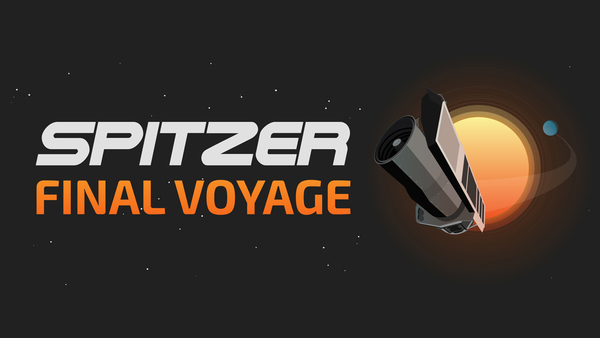
By Joey Jefferson | January 6th, 2020
The best way for me to express my time at Spitzer can be wrapped up in one word: family. Spitzer was the first project I ever worked for. From the first day, there was an ease of meeting the team members and witnessing their diligence in supporting their spacecraft. The care they had for each other was immediately apparent.
I joined the Spitzer team in 2014 as a summer intern and was hired to be an Ace for a couple of years afterwards. Ace duties include commanding the spacecraft from Earth, conducting command checks and various day shift activities, and creating ground software to simplify commanding. We’re also the single point of contact between the entire flight team consisting of an array of subgroups, including a spacecraft team, a navigation team, science teams, and teams external to the flight project, such as the Deep Space Network (DSN), Facilities Maintenance, Multi-Mission Data Systems Operations Team (DSOT), Ground Communications Facility (GCF), Advanced Multi-Mission Operations System (AMMOS), System Administrators (SAs), Network Administrators, and others. The position also includes executing,, commanding, and managing the ground systems, ensuring the capture and delivery of telemetry, monitoring and tracking data, watching for alarm limit violations in telemetry, managing alarm limits, evaluating data quality, and performing limited real-time analysis to determine such things as maneuver effectiveness and spacecraft health. And and Ace also coordinates the activities of the DSN and other external teams in support of the flight project(s).
I like to analogize Acing to flying a plane, especially since the title is a reference to the World War I flying ace (see https://solarsystem.nasa.gov/news/10023/space-ace/ for a little history). I am the telescope’s pilot, and going into work 99% of the time is routine. But, there is a chance a seemingly routine shift can quickly turn into an unusual (and stressful) one that requires me to fall back on my training while remaining calm and working through the checklists. The main difficulty of the job is knowing when to call project management and get them involved.
I remember the first safe mode I ever experienced while commanding Spitzer. If you’re not familiar with “safe mode,” imagine you’re driving a car and the check engine light comes on. Normally, you would take it to an auto shop and follow the appropriate steps to fix whatever problem caused the light. For a spacecraft that is hundreds of millions of miles away, there is no shop. To mitigate the potential problems of running the telescope’s sophisticated hardware when there is an issue, the spacecraft’s engineers created a “safe mode,” which is the lowest possible state of power needed to keep the spacecraft operational. This gives engineers some breathing room to figure out whatever placed the spacecraft into safe mode, which could be anything from a corrupted file or failed hardware.
Safe mode is not a desired state, especially for an observatory in high demand like Spitzer, so time is of the essence to quickly figure out whether the spacecraft is in safe mode, calling the appropriate team members, and working with the spacecraft team in Denver and Spitzer management at JPL to troubleshoot and fix the issue.
The day of my first safe mode started off normally. Everything was going fine until it was time for the downlink signal to be acquired, which failed to happen. We tried changing a multitude of station configurations to acquire the signal, but no dice. At that point, once I exhausted every action I could take, I knew there was something either wrong with the station or the spacecraft; my gut told me it was the latter.
I called Joseph Hunt, Spitzer’s Flight Director, who was in Arizona for the Thanksgiving weekend. I told him we didn’t receive the downlink signal well past the planned time.
The jokes that Joseph made about having to return to California during his vacation were priceless, but he still showed up and the team worked efficiently to place the spacecraft in a nominal state. I didn’t hear one complaint from anyone on the team because everyone loved working on this mission and was dedicated to its success.
Personally, I went through some of my hardest times dealing with depression while working on this mission, and the level of professionalism and understanding from so many team members will always be close to my heart. I am, thankfully, in a much healthier place now, and my time with Spitzer and on lab in general has been invaluable to my career development. The professionalism mixed with candor, the attention to detail, and the focus on doing great work and providing mentorship to younger team members has shaped me into the professional I am today.
Spitzer is an amazing, storied mission that has produced so much for so many, and I am so thankful to have begun my career with Spitzer.

 Rime of the Ancient Astronomer: Dr. Deborah Levine Waxes Poetic With a Spitzer Tale in Verse
Rime of the Ancient Astronomer: Dr. Deborah Levine Waxes Poetic With a Spitzer Tale in Verse
 Bitten by the Spitzer Bug: Covering Spitzer News Is The Coolest Job in LA
Bitten by the Spitzer Bug: Covering Spitzer News Is The Coolest Job in LA



